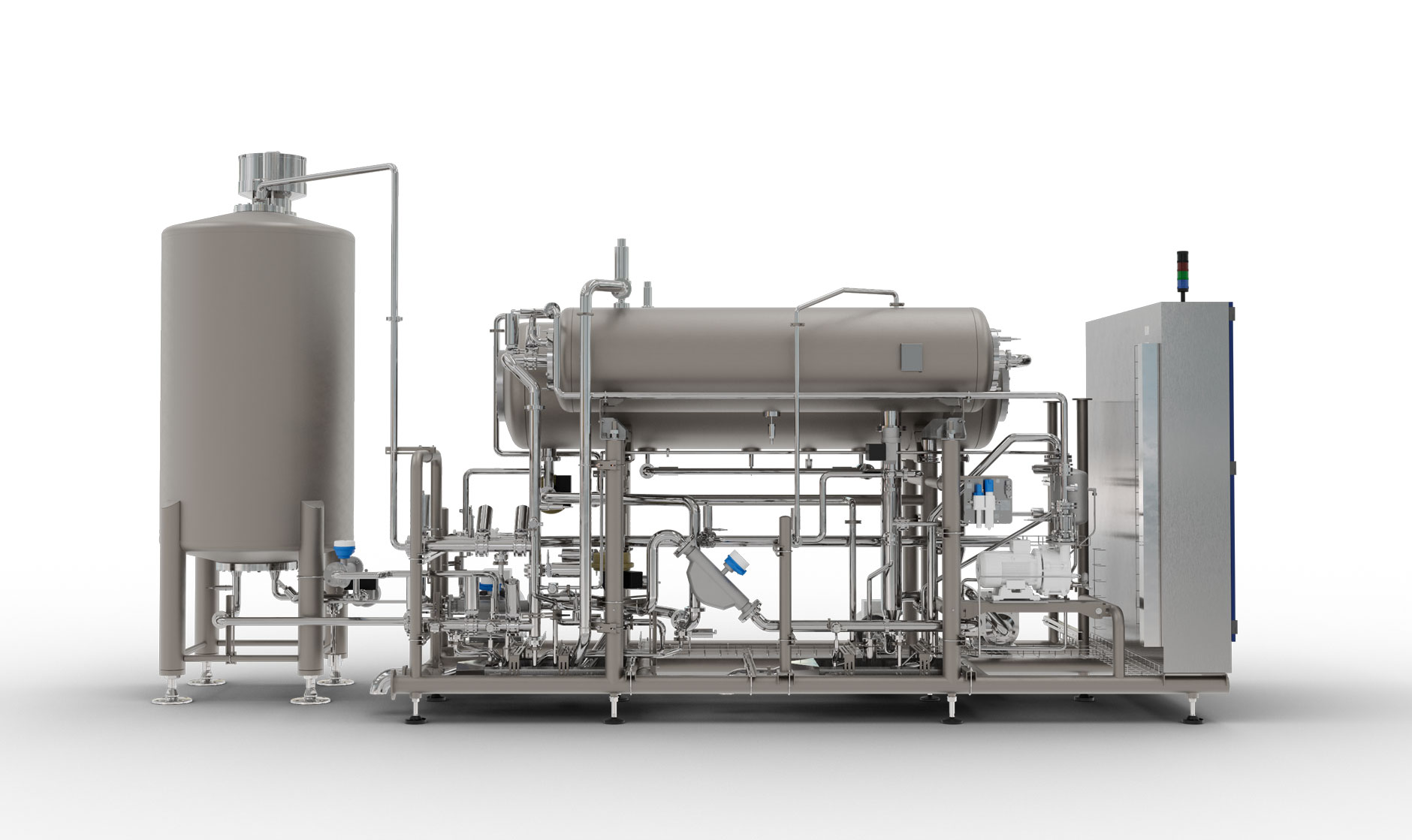Optional features make beverage mixing more sustainable

- Integrated syrup supply tank reduces product losses.
- Two-tank concept minimises change-over times.
- Additional optional features also yield CO₂ and water savings.
The Contiflow is a true allrounder, suitable for mixing and carbonating all varieties of beverages. In order to harmonise proven line engineering with beverage makers’ sustainability strategies, Krones offers op-tional features for the Contiflow that achieve savings in many areas.
Integrated syrup supply tank
At the BrauBeviale, Krones presents a line concept that includes an integrated syrup supply tank. This variant is especially beneficial when the line and the syrup room are not located directly next to each oth-er. That’s because long supply pipes result in long mixing phases – and if flushing the pipes requires a stop-and-go operation of the filling line then that in turn increases product losses. The integrated supply tank makes it possible to empty any mixing phases that would otherwise have to be drained away directly into the tank. Brix-value-controlled admission of the syrup on the Contiflow can even out any resulting fluctuations in the Brix value, depending on the product and mixing ratio involved.
This not only minimises product losses but also shortens change-over times. A high-end solution with two supply tanks is also available, which further substantially speeds change-overs. That is because the syrup feed pipes also have to be drained and flushed at every product change. And depending on the length of the pipes, that process can take more time than the flushing programmes of the Contiflow and Modulfill.
With the two-tank concept, the second tank is already filled and immediately ready for production when it comes time for a product change-over. The first tank can then be cleaned and made ready for the next production batch without additional line downtime.
Conserving CO₂ and water
Adaptive control of the headspace pressure in the carbonation tank makes it possible to optimise CO₂ consumption without negatively impacting the performance of the filling line. Additionally, for many products experience shows that it is possible to change the process gas used in the carbonation tank from CO₂ to compressed air or N₂ without stopping production and thus significantly reduce CO₂ consumption – without compromising product quality.
Water consumption at the vacuum pump also holds considerable potential for savings. Instead of the cus-tomary temperature controls, a heat exchanger can be integrated as an optional extra. It can work with either an external coolant or deaerated product water on the principle of countercurrent exchange. This can save more than one million litres of water in a plant that operates 16 hours a day on 250 days per year.
Download
